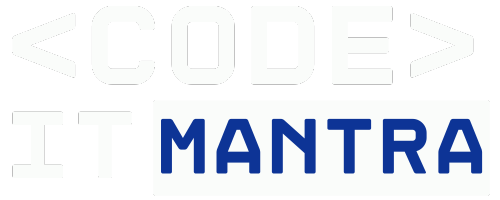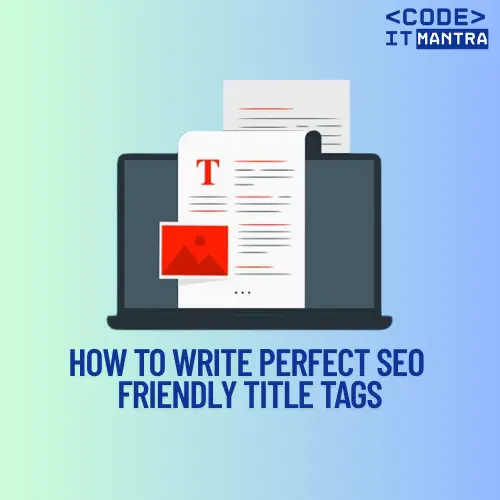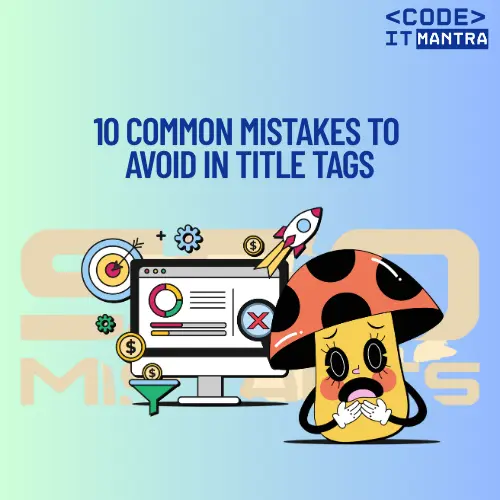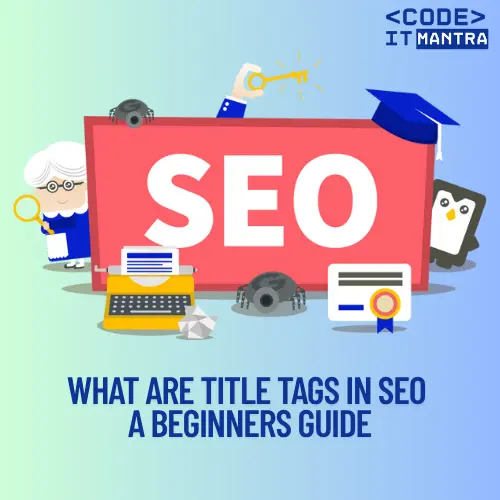How to Write Perfect SEO Friendly Title Tags
Table of Contents

Understanding the Role of Title Tags
Title tags play a quite important role in SEO & website usability. They help search engines like Google understand what your web page is about. At the same time they give users a clear idea of what they will find on the page before clicking. Understanding the role of title tags is essential for improving your website visibility & attracting more visitors.
1. Title Tags Help Search Engines Understand Content
Search engines use title tags to quickly hold the main topic of your page. The title tag acts like a headline for search engines summarizing the content in a few words. When the title includes relevant keywords it makes it easier for search engines to match your page with user searches which can improve your ranking on search results pages.
2. Title Tags Impact Click-Through Rates
The title tag is the first thing users see when they find your page in search results. A well-written title tag that clearly explains the page content & includes appealing words can encourage more people to click. For example adding words like "Guide" "Tips" or "Best" can make the title more inviting & increase traffic to your site.
3. Title Tags Appear in Multiple Important Places
Besides search results title tags appear in browser tabs & when your link is shared on social media platforms. In the browser they help users know which pages they have open. On social media they often become the headline shown with the link. This wide visibility makes title tags a key part of your website branding & user experience.
4. Unique Title Tags Improve SEO & User Experience
Each page on your website should have a unique title tag. Using the same title for multiple pages confuses search engines & users reducing your SEO effectiveness. Unique titles help search engines differentiate pages & give users with clear information on what each page offers. Always customize title tags for every page content.
5. Keep Title Tags Clear & Concise
Title tags should be between 50 & 60 characters long. If they are too long search engines cut them off & users see incomplete titles. Keeping them concise ensures the full title is visible making your message clear. A concise title with important keywords placed near the beginning works best for SEO & user understanding.
6. How to Write Effective Title Tags: Example
Consider a page about healthy smoothie recipes. A bad title tag might be "Home" or "Page 3" which gives no useful information. A better title tag would be "Healthy Smoothie Recipes for Weight Loss | FreshBites." This title includes relevant keywords is unique & invites users to click by explaining what the page offers clearly.
<title>Healthy Smoothie Recipes for Weight Loss | FreshBites</title>
7. Using Keywords Wisely in Title Tags
Including keywords in your title tags helps search engines understand your page. But overusing keywords can look spammy & harm your ranking. Place your main keyword near the start of the title & use natural language. This balance helps your page rank well & attracts real users who are searching for that topic.
8. Tools to Improve Title Tags
Many tools can help improve your title tags. Google Search Console shows how your pages perform & which titles get more clicks. SEO plugins like Yoast help you write titles within the correct length & suggest improvements. Moz & Ahrefs give analysis to ensure your title tags are unique clear & effective for SEO.
- Google Search Console: Monitor page performance & clicks
- Yoast SEO: Real-time title tag suggestions for WordPress
- Moz Title Tag Preview: Check how your title appears in search results
Conclusion
Title tags are a small but powerful part of your SEO strategy. They help search engines understand your content & impact whether users click on your site. Writing unique clear & keyword-focused title tags improves your search ranking & user experience. By using best practices & tools you can make your title tags work for your website success.

The Ideal Length & Format for SEO Titles
SEO titles also known as title tags are quite important for improving your website search engine ranking. The right length & format of these titles can make a big difference in attracting visitors from search results. Understanding how to create effective SEO titles helps your page get noticed & clicked by users increasing your website traffic.
Why SEO Title Length Matters
The length of an SEO title affects how it appears in search engine results pages (SERPs). If the title is too long search engines like Google cut it off showing only part of the title. This reduces clarity & can make your link less attractive to users. Keeping titles within the ideal length ensures they are fully visible & clear.
What is the Ideal Length for SEO Titles?
-
The ideal length for SEO titles is between 50 & 60 characters. This range allows search engines to display your full title without cutting it off. It also provides enough space to include important keywords while keeping the title readable & natural.
-
Titles shorter than 50 characters may miss important keywords or fail to fully describe the page content. Then titles longer than 60 characters get truncated which can confuse users & lower your click-through rate.
How to Format SEO Titles Well
-
Place Keywords at the Start: Search engines give more weight to the first few words of your title. Including primary keywords early helps improve your rankings for those terms.
-
Keep Titles Clear & Descriptive: Your title should explain what the page is about clearly. Avoid vague words & focus on user intent so visitors know what they will find on your page.
-
Use Separators to Organize: Using symbols like a vertical bar (|) dash (-) or colon (:) helps separate different parts of your title. This makes the title easier to read & more professional.
-
Include Branding When Appropriate: Adding your brand name at the end of the title can increase trust & help build brand awareness primary for known brands.
Example of a Well-Formatted SEO Title
Here is an example of an SEO title with ideal length & format: Best Running Shoes 2025 | Comfortable & Durable | YourBrand. This title is under 60 characters starts with important keywords uses separators & includes the brand name at the end.
Common Mistakes to Avoid in SEO Titles
-
Keyword Stuffing: Adding too many keywords in the title can make it look spammy & unnatural. This can lower your ranking & discourage users from clicking.
-
Too Long Titles: Titles that exceed 60 characters get cut off losing important information & user interest.
-
Missing Keywords: Forgetting to include important keywords reduces the chance of your page appearing in relevant searches.
-
Using Generic Titles: Titles like "Home" or "Welcome" do not describe the content & are poor for SEO.
How to Check & Edit SEO Titles
You can check your SEO title length using online tools or SEO plugins like Yoast SEO or Rank Math if you use WordPress. These tools stress if your title is too long or missing keywords. Editing titles can be done directly in the HTML <title> tag or via your CMS SEO settings.
<title>Your SEO Title Here</title>
Conclusion
The ideal length & format of SEO titles are critical for improving search rankings & attracting clicks. Keeping titles between 50 to 60 characters placing keywords early & using clear formatting increases your chances of ranking well & engaging users. Avoid common mistakes like keyword stuffing or long titles to maximize your SEO success.

Using Keywords Smartly in Title Tags
Keywords are quite important for SEO because they help search engines understand what your webpage is about. Using keywords smartly in title tags can improve your website ranking & attract the right visitors. A well-crafted title tag with the right keywords can make your page stand out in search results & encourage users to click on your link. In this guide we will explain how to use keywords smartly in title tags with clear examples & solutions.
1. Place Important Keywords Near the Beginning
Search engines like Google give more importance to the first few words in your title tag. This means placing your main keywords near the start can help your page rank better. For example if your page is about "organic skincare" a good title would be Organic Skincare Tips for Healthy Skin instead of Tips for Healthy Skin with Organic Products. The first example puts the keyword right at the beginning making it clear & effective.
2. Use Primary & Secondary Keywords Together
Including both primary & secondary keywords in your title tag helps cover a wider range of search queries. Primary keywords describe the main topic while secondary keywords add extra detail. For example Best Running Shoes for Women - Comfortable & Affordable combines the main keyword "running shoes for women" with secondary keywords "comfortable" & "affordable." This approach improves your chances of ranking for different related searches.
3. Avoid Keyword Stuffing in Title Tags
Keyword stuffing means adding too many keywords unnaturally which makes the title hard to read & may hurt your SEO. Instead use keywords naturally & focus on making the title attractive. For example a bad title would be Cheap Shoes Cheap Running Shoes Cheap Sports Shoes. A better title is Affordable Running Shoes for Sports & Fitness. This title uses keywords clearly without repetition & sounds natural.
4. Match Keywords to User Intent
Understanding why users search for a keyword helps you choose the right words for your title tag. For example someone searching "buy laptop online" wants to make a buy while "best laptops 2025" means they want to compare & learn. Tailor your title tags to fit what users want. For example Buy Affordable Laptops Online - Free Shipping fits buyers while Top 10 Best Laptops for 2025 fits researchers.
5. Keep Title Tags Clear & Concise
Using keywords smartly does not mean making long & complicated titles. Keep your title tag clear & within 50 to 60 characters so that it displays fully in search results. For example Healthy Breakfast Recipes for Busy Mornings is clear & concise while Quick & Easy Healthy Breakfast Recipes That Will Change Your Life Forever is too long & may be cut off by search engines.
6. Include Your Brand Name with Keywords
Adding your brand name at the end of your title tag helps build brand awareness & trust. Make sure to place your main keywords first then add your brand. For example Affordable Yoga Mats for Beginners - YogaLife shows the product keyword first & then the brand name. This helps Google associate your brand with relevant keywords & improves user confidence.
Example Code for a Title Tag Using Keywords Smartly
<title>Best Organic Coffee Beans Online - Fresh & Fairtrade - CoffeeCo</title>
This title tag includes the main keyword "organic coffee beans" at the beginning secondary keywords "fresh" & "fairtrade" for more details & the brand name "CoffeeCo" at the end. This is clear keyword-rich & easy to read which can help with better rankings & more clicks.
Summary of Key Points
- Place important keywords near the start of the title tag to make them more visible to search engines.
- Use both primary & secondary keywords together to cover a wider range of search queries well.
- Avoid keyword stuffing by using keywords naturally & writing attractive readable titles.
- Match keywords to user intent to create titles that fit what users are searching for.
- Keep title tags clear & concise staying within the optimal character limit for full display.
- Include your brand name at the end of the title tag to build brand recognition & trust.
By using keywords smartly in your title tags you can improve your website search ranking & attract more targeted visitors. Focus on clarity relevance & natural writing to make your titles both user-friendly & SEO-friendly.

Crafting Titles That Appeal to Searchers
Creating titles that appeal to searchers is one of the most important steps in attracting visitors to your website. A title tag is the first thing people see in search results. If it grabs their attention & clearly tells them what to expect they are more likely to click. Writing effective titles requires understanding your audience using the right words & following SEO best practices.
When your title is appealing it not only improves your chances of getting clicks but also helps your page rank higher in search engines. Search engines use the title to understand the topic of your page so a well-crafted title can bring the right visitors to your site. Let us explore how to create titles that both search engines & users like.
1. Understand What Searchers Want
The first step in crafting appealing titles is to know what your audience is looking for. Searchers want quick answers or solutions to their problems. For example if someone searches for "how to grow tomatoes" they want clear & helpful information. A title like "Easy Steps to Grow Healthy Tomatoes at Home" directly addresses this need & attracts clicks.
Solution: Research your audience questions & needs. Use tools like Google Suggest or keyword planners to find common search phrases. Create titles that match what people want to know or learn.
2. Use Simple & Clear Language
Titles should be easy to read & understand at a glance. Avoid complicated words or phrases that confuse users. Simple language helps users quickly know what your page offers. For example "Best Tips for Saving Money Fast" is clear & direct while a complex title may lose interest.
Solution: Write titles using everyday words. Keep the message simple & focused. This makes your title more attractive & user-friendly increasing clicks.
3. Include Keywords Naturally
Keywords are the words users type when searching. Including important keywords in your titles helps search engines connect your page to the right queries. For example a page about vegan recipes might have a title like "Easy Vegan Dinner Recipes for Beginners." This includes relevant keywords without sounding forced.
Solution: Add main keywords in your title tags in a natural way. Avoid stuffing keywords which can make the title awkward & less appealing. Aim for smooth readable titles that still include important terms.
4. Make Titles Engaging with Power Words
Power words are terms that create emotion or excitement. Words like "ultimate" "easy" "free" or "quick" catch attention & make titles more interesting. For example "The Ultimate Guide to Home Gardening" sounds more inviting than just "Home Gardening Guide." Power words help your title stand out in search results.
Solution: Use power words to add energy & interest to your titles. Think about what emotions or benefits your audience cares about & include words that stress these feelings.
5. Keep Titles Concise & Focused
Long titles can get cut off in search results making them less effective. Users may miss important information if the title is too long. Keeping your title under 60 characters helps ensure it shows fully on most devices. For example "Top 10 Healthy Breakfast Ideas" is concise & easy to read.
Solution: Limit your titles to 50-60 characters. Focus on the main idea & avoid unnecessary words. This helps your title look clean & complete in search results encouraging clicks.
Code Example: A Well-Crafted Title Tag
<title>10 Easy Tips to Improve Your Writing Skills Quickly</title>
This title is clear includes keywords like "tips" & "writing skills" uses power words such as "easy" & "quickly" & is concise. It appeals directly to users who want to improve their writing fast.
Summary of Tips for Crafting Titles That Appeal
- Understand searcher intent: Know what your audience wants & create titles that answer their needs.
- Use simple language: Make titles easy to read & understand without difficult words.
- Include keywords naturally: Add important search terms in a smooth & relevant way.
- Add power words: Use words that create excitement & attract attention.
- Keep titles concise: Limit length to 50-60 characters for full display in search results.
By applying these tips you can write title tags that both search engines & users love. Well-crafted titles increase clicks improve SEO & help your website reach more people well. Spend time creating titles that speak directly to your audience & watch your traffic grow.

Tools to Create & Improve SEO Title Tags
Creating & optimizing SEO title tags is quite important to improve your website visibility & attract more visitors. Fortunately there are many useful tools available that help you write better title tags. These tools guide you to include the right keywords keep the length perfect & make titles attractive for users & search engines. In this article we will discuss some of the best tools for creating & optimizing SEO title tags with clear examples & solutions.
1. Google Search Console
Google Search Console is a free & powerful tool provided by Google. It helps you check how your current title tags perform in search results. You can see which pages have low click rates & need better titles. This tool also shows if your title tags are too long or missing. Using this data you can fix & improve your titles to get more clicks & better rankings.
2. Yoast SEO Plugin
Yoast SEO is a popular plugin for WordPress websites. It helps you write SEO-friendly title tags with live feedback. The plugin shows you if your title is too long or short & whether it contains important keywords. Yoast also suggests improvements to make your title more readable. For example if your title is too long Yoast will warn you & recommend trimming it to fit Google display limit.
3. SEMrush Title Tag Preview Tool
SEMrush offers a Title Tag Preview Tool that lets you see how your title will appear in Google search results before you publish. This tool helps avoid truncation or cutting off of the title. You can test different versions of your title & choose the one that looks best. For example you can enter a long title & adjust it until it fits perfectly in the preview window.
4. Moz Title Tag Preview Tool
Moz provides a simple Title Tag Preview Tool that shows how your title appears on desktop & mobile search results. This helps ensure your titles look good on all devices. Moz also suggests how to improve your title length & keyword placement. For example you might learn to place important keywords near the start of the title for better SEO.
5. Answer The Public
Answer The Public is a unique tool that helps find popular questions & phrases people search for online. You can use this tool to discover relevant keywords & topics to include in your title tags. For example if you run a cooking blog the tool might show questions like "how to bake bread at home." You can then create a title tag like "How to Bake Bread at Home – Easy Step by Step Guide."
6. Google Keyword Planner
Google Keyword Planner is a free tool that helps find the best keywords for your title tags. It shows how often people search for certain words & how competitive those keywords are. By choosing keywords with good search volume but low competition you can improve your chance of ranking higher. For example instead of a quite common keyword like "shoes" you can use "comfortable running shoes for women" for more targeted traffic.
7. Using Title Tags in HTML Correctly
After creating an optimized title tag this is important to place it correctly in your webpage HTML code. The title tag must be inside the <head> section of your HTML document. Here is an example of a properly formatted title tag:
<head>
<title>Best Comfortable Running Shoes for Women | YourBrand</title>
</head>
This placement ensures that search engines can easily find & display your title tag in search results.
Summary of Tools & Tips
- Google Search Console: Analyze current titles & improve low-performing pages.
- Yoast SEO Plugin: Get live feedback on title length & keyword use.
- SEMrush Title Tag Preview: Test how titles appear in search results before publishing.
- Moz Title Tag Preview: Check title display on desktop & mobile devices.
- Answer The Public: Find popular search questions to include in titles.
- Google Keyword Planner: Choose the best keywords based on search volume & competition.
- Correct HTML placement: Always place title tags inside the <head> section.
Using these tools together can help you create SEO title tags that improve your website ranking increase click rates & attract the right audience. Remember to keep your titles clear concise & full of relevant keywords. Regularly update your titles based on performance data to stay ahead in search engine results.

Examples of Well-Written SEO Title Tags
SEO title tags are quite important for improving your website search engine ranking & attracting visitors. A well-written title tag clearly describes the page content & includes keywords that people search for. In this article we will explain examples of good SEO title tags why they work & how you can create your own effective titles.
What Makes a Title Tag Well-Written?
A well-written SEO title tag is clear concise & includes important keywords. It must also be unique for each page & easy to read by users. A good title tag helps search engines understand your content & strengthen users to click on your link in search results. Below we will look at points that make a title tag effective.
Key Points of Well-Written SEO Title Tags
- Include Relevant Keywords: Use keywords that best describe the page topic. Placing them near the start of the title can help search engines & users recognize the page content quickly.
- Keep It Under 60 Characters: Title tags longer than 60 characters may be cut off in search results. Short titles are fully visible & make it easier for users to read & understand.
- Make It Unique: Each page on your website should have a different title tag. This avoids confusion for search engines & helps rank pages for specific topics.
- Use Natural Language: Titles should sound natural & inviting. Avoid keyword stuffing or unnatural phrases that may reduce click-through rates.
- Include a Call to Action: Using words like "Best" "Guide" or "Top" strengthen users to click on your link increasing traffic.
Example 1: E-commerce Product Page
For an online store selling running shoes a good title tag could be:
<title>Best Running Shoes for Men - Comfortable & Affordable</title>
This title includes keywords like "running shoes" & "men" clearly describes the product & uses words like "best" & "affordable" to attract clicks.
Example 2: Blog Post About Healthy Eating
A title tag for a blog post could be:
<title>Healthy Eating Tips for Beginners - Simple & Effective Guide</title>
This title is clear uses keywords like "healthy eating" & "beginners" & invites users with words like "tips" & "guide." This is easy to read & attractive to users.
Example 3: Service Page for Plumbing
For a plumbing service website a strong title tag example is:
<title>Affordable Plumbing Services in New York - 24/7 Emergency Help</title>
This title includes location keywords service type & highlights 24/7 availability. It makes the service clear & helps users looking for quick plumbing help.
How to Write Your Own SEO Title Tags
- Research Keywords: Use tools like Google Keyword Planner or other SEO software to find popular keywords related to your content.
- Focus on User Intent: Think about what users want when they search for your keywords. Write titles that answer their questions or solve their problems.
- Test & Improve: Monitor your title tags' performance using tools like Google Search Console. If a title has low click-through rates try rewriting it.
- Avoid Duplicate Titles: Make sure every page has a unique title tag. This helps search engines understand the different pages on your website better.
Simple HTML Code Example of Title Tag
This is how a title tag is written in HTML:
<title>Your Page Title Goes Here</title>
This code goes inside the <head> section of your webpage & defines the page title shown in search results & browser tabs.
Conclusion
Writing well-optimized SEO title tags is essential to improve your website ranking & attract more visitors. By including relevant keywords keeping titles short unique & natural & using attractive language you can increase your website click-through rate. Study the examples given & follow the tips to create your own effective title tags.




























































































































































































































